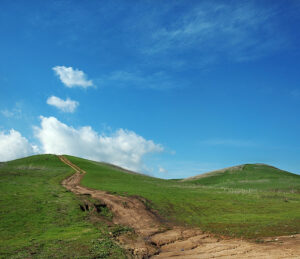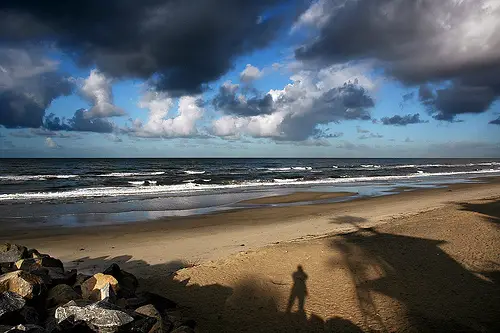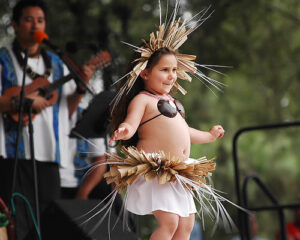Focus in photography is about a lot more than simply sharpness or being able to see what you are looking at. Focus can enhance a subject by making it stand out from or blend into its surroundings, focus can draw you in, and the right focus can create an emotional connection with the viewer.
 No matter what style of photography you enjoy, focus can work for you or against you.
No matter what style of photography you enjoy, focus can work for you or against you.
Let’s discuss how to focus in different types of photography.
Portraits
The number one rule when shooting portraits of people or animals is this: focus on the eyes. (There are always exceptions—like all rules. But really, focus on the eyes.) By virtue of millions of years of evolution, human beings are hard-wired to very quickly recognize and respond to faces. (It’s definitely an important survival trait in my family to recognize when someone is angry at you, for example.)
Sure, you could focus on the tip of the nose or the ears if you like (which might work really well in some dog photos…) but nothing draws in a viewer to a portrait like sharply focused eyes and a blurred background.
How do you do it? Use a large aperture (f/2.8 or lower if possible), longish focal length (50mm and up), and get as close as you can.

Landscapes/architectural
 Landscapes, photographs of nature or the environment around you, usually aim to capture as much of the view as sharply focused as possible. The idea is to give the viewer a sense of size, of scale. A buffet of sights, a feast for the eyes. Landscape photographers often avail themselves of a little knowledge of hyperfocal distances to keep everything in the scene in perfect focus, from the closest flower to the furthest cloud.
Landscapes, photographs of nature or the environment around you, usually aim to capture as much of the view as sharply focused as possible. The idea is to give the viewer a sense of size, of scale. A buffet of sights, a feast for the eyes. Landscape photographers often avail themselves of a little knowledge of hyperfocal distances to keep everything in the scene in perfect focus, from the closest flower to the furthest cloud.
When everything in a photograph is in focus, the viewer’s eye is drawn first to important bold elements in the composition such as a strong line, large blocks of color, and rule of thirds intersection points. From there, the viewer wanders through the photograph like a virtual traveler, exploring every nook and cranny and taking everything in.
In the photo above, for instance, my eye goes first to the bottom of the trail and follows it up to the cloud and then over the rolling curve of the ridge to the blue sky above.
How do you do it? Use as small an aperture as you can (f/11 or higher), focus on something in the middle distance (or use the hyperfocal distance), and, if possible, use a tripod. Very tiny apertures (f/11, f/16, f/22) lead to longer shutter speed so tripods are often necessary for maximum sharpness.

Macros
Macros are the ultimate close-ups. Often focusing on a single, tiny subject, macros require special techniques and a lot of patience to get right. I don’t have any numbers to back this up, but I’d bet money that the rate of mental illness is higher among macro photographers than the rest of the photography population.
Macros are well-known for their ability to isolate and enlarge a single subject that often goes unnoticed to the naked eye. They’re also characterized by extremely shallow depths of field (sometimes just millimeters).

The shallow depth of field is usually a consequence of the very short working distances between the camera and the subject often required of macros (just inches). Counter-intuitively, with macro photography it is a constant struggle to increase the depth of field as much as possible so that the right amount of the subject is in focus.
How do you do it? Attach your favorite macro lens or use the macro mode on your camera, get as close as you can focus, and use the smallest aperture you can (f/8, f/11 or higher). Small apertures and close working distances sometimes mean low light as well so you may need to bring extra light, a tripod, and/or use a higher ISO setting.
Environmental portraits
 These types of photographs are a blend of standard portraiture and landscape photography. The idea is that a portrait subject is shown in surroundings that tell the viewer something about that person. There are many different approaches to this type of photography but in general, since the person is primary subject, the person should always be in focus. Whether you keep the background in focus (and how much) depends a lot on the composition of the photo, whether the background is cluttered or clean, and how much emphasis you want to place on each (the subject vs. the environment).
These types of photographs are a blend of standard portraiture and landscape photography. The idea is that a portrait subject is shown in surroundings that tell the viewer something about that person. There are many different approaches to this type of photography but in general, since the person is primary subject, the person should always be in focus. Whether you keep the background in focus (and how much) depends a lot on the composition of the photo, whether the background is cluttered or clean, and how much emphasis you want to place on each (the subject vs. the environment).
Since these usually aren’t close-up portraits (head shots), focusing strictly on the eyes isn’t as important.
How do you do it? Use a medium aperture (f/4, f/5.6, f/8), a medium to wide focal length to include some background, and a fast enough shutter speed to freeze the portrait subject.

I hope this was helpful in teaching you how to achieve good focus in various situations. Click here to learn how to focus stack to take your images beyond sharp.









Great post, John. Definitely starred and faved in Google Reader and del.icio.us.
(Sorry, not much more I can add.)
I enjoyed this post too. I tend towards doing macro photography and had to laugh about your reference to mental health impacts. I need to improve my ability to manage dof within my macro shots for sure. For me, a tripod, tons of patience and switching the lens to manual are key to improving macro shots.
EXTREMELY helpful, especially with the technical specifics. Thanks so much!
thanks a lot, it was extremely helpful
especially the bit about focusing on eyes, i love doing portraits, and ur tip was very important one, please keep up the good work, really!!!!!!!
I really enjoyed this post and it’s really gonna add to my skills. I’m a beginner and would really get help from such posts!
Thanks!
Great post. You really gave me a lot of food for thought and I’ll be taking your points into consideration as I travel about with my camera in the back of the car.
Thanks very much!
Environmental shots are not my forte, thanks for the technical hints!
Simple, but usefull guide. Bottom picture rocks!
Solid technical advice, thanks.
I love the photo of the little dog!! Great shot of his eyes!!
I am not sure I appreciate you calling me mental.
Cos, it is frightening that you would know that about me. lol
Great information. I have a lot to relearn after being away from any ‘serious’ photography for about 3 decades.
Great post .. too many photographers do not place enough thought into focus. I always encourage photographers to evaluate every shot they take at 100% magnification.